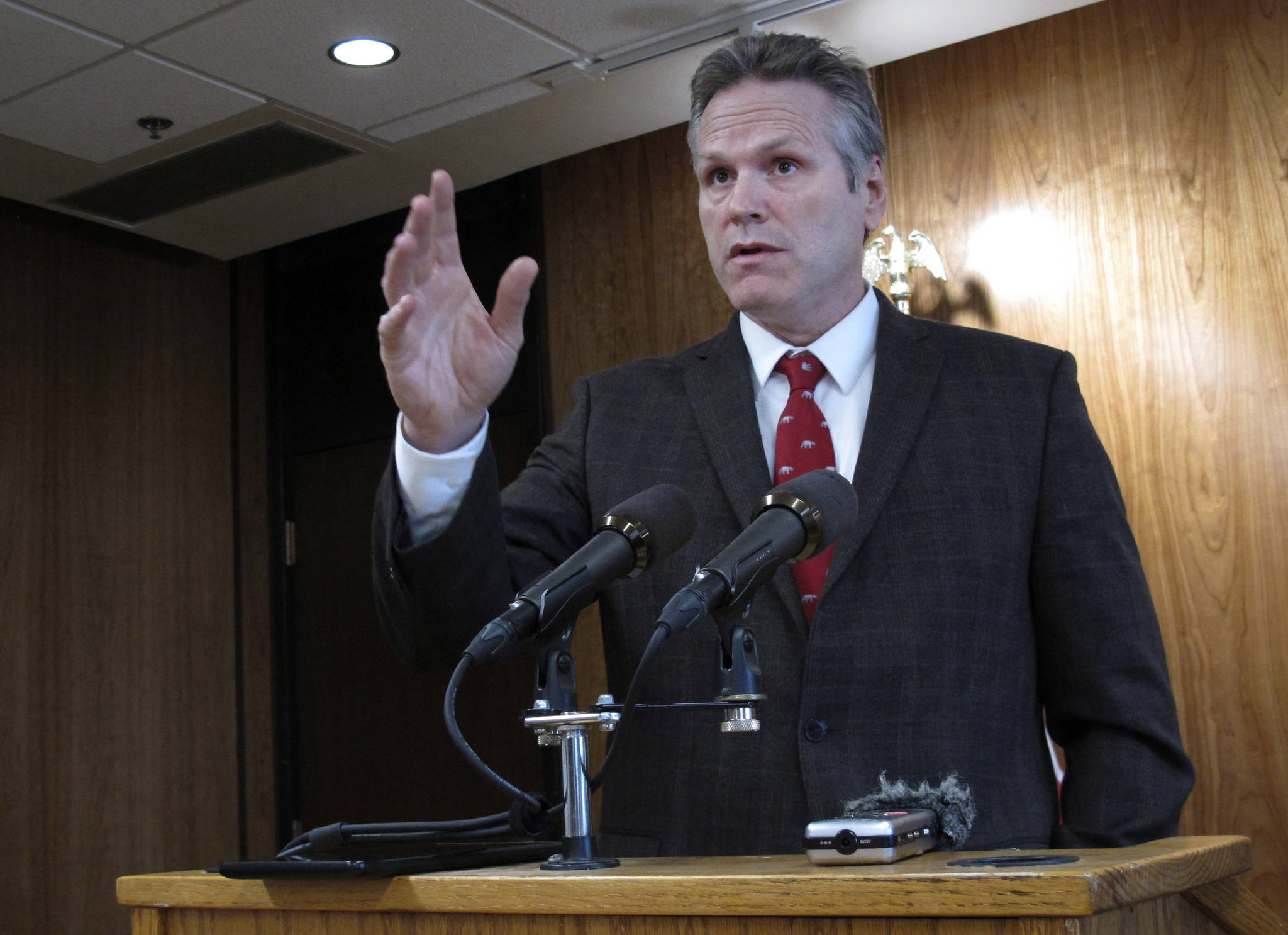By Becky Bohrer
Associated Press
JUNEAU — Gov. Mike Dunleavy proposed Wednesday giving Alaskans an additional $1,304 from the state’s oil wealth fund on top of the roughly $1,600 they received last fall.
The Legislature last year approved an Alaska Permanent Fund dividend that amounted to $1,606. It would have been $2,910 had a formula in state law been followed, the state Revenue Department has said. Dunleavy’s proposal would make up the rest of the 2019 amount.
Lawmakers have said paying a higher dividend as calculated under the existing formula is unsustainable.
Dunleavy’s proposal would cost $815.9 million and be paid with permanent fund earnings, according to his budget office. He additionally has called for a dividend in line with the formula for 2020, which the Legislative Finance Division has said would equate to checks of about $3,100 a person.
Traditionally, dividends have been paid using fund earnings, which lawmakers in 2018 also began using to help cover government costs amid a persistent budget deficit. The Legislature also passed a law seeking to limit withdrawals from earnings, heightening tension between how much should go to dividends and how much should go to government. Dunleavy campaigned on a so-called full dividend and has sought to give Alaskans a say on changes to the program. Last August, he said he anticipated a special session to address a supplemental dividend payout; that special session didn’t happen.
More than 630,000 residents have received 2019 dividends. Responding to Dunleavy’s proposal, House Speaker Bryce Edgmon said there wasn’t support for a larger dividend last year and he didn’t think there would be support this year. House Minority Leader Lance Pruitt said his Republican caucus hasn’t taken a position on an additional payout. “And I think right now it’s probably hard to take a position on that when we’re not even sure how this year’s going to come out, right?” he said.
Pruitt said he believes there needs to be a dividend law that’s followed. The state needs a long-term fiscal policy, and the back and forth on the dividend isn’t helping with that, he said. Many lawmakers have expressed interest in changing the dividend formula to work within the confines of an earnings withdrawal limit. Senate President Cathy Giessel recently told reporters senators support the dividend program. But she said the state has a limited amount of money, critically needed services and services that are constitutionally mandated. “We will do what we can but we are not going to put this state into a precarious financial position,” she said.
The Alaska Supreme Court, in upholding then-Gov. Bill Walker’s 2016 veto of a portion of the money set aside for dividends, found that absent a constitutional amendment, the dividend program must compete for annual funding like other state programs.
• By Becky Bohrer, Associated Press

